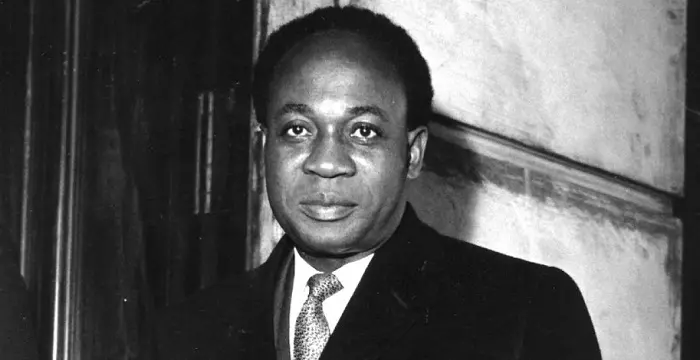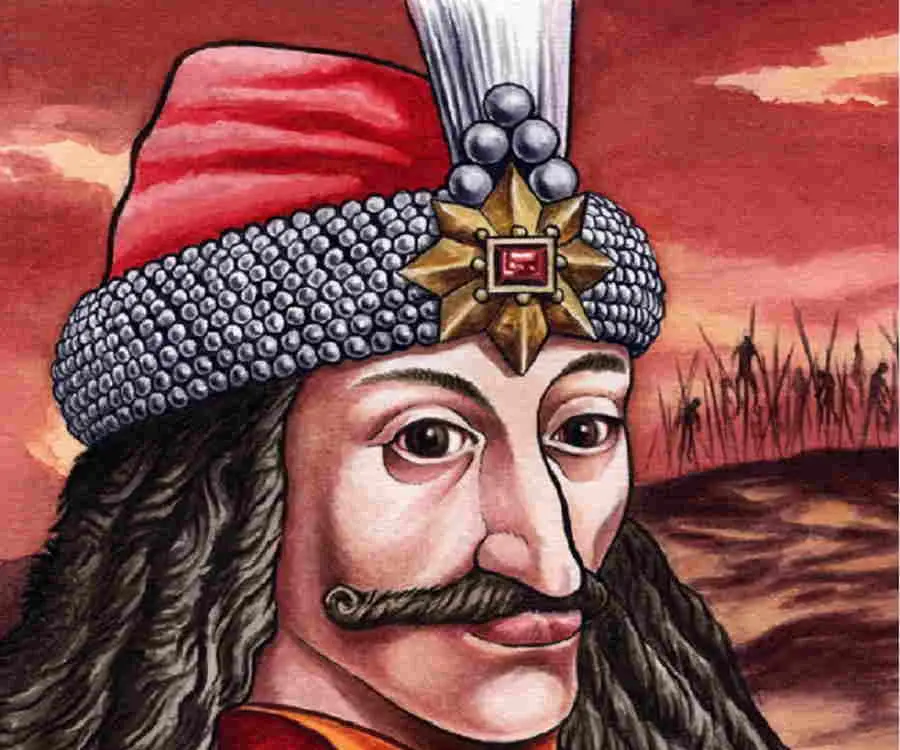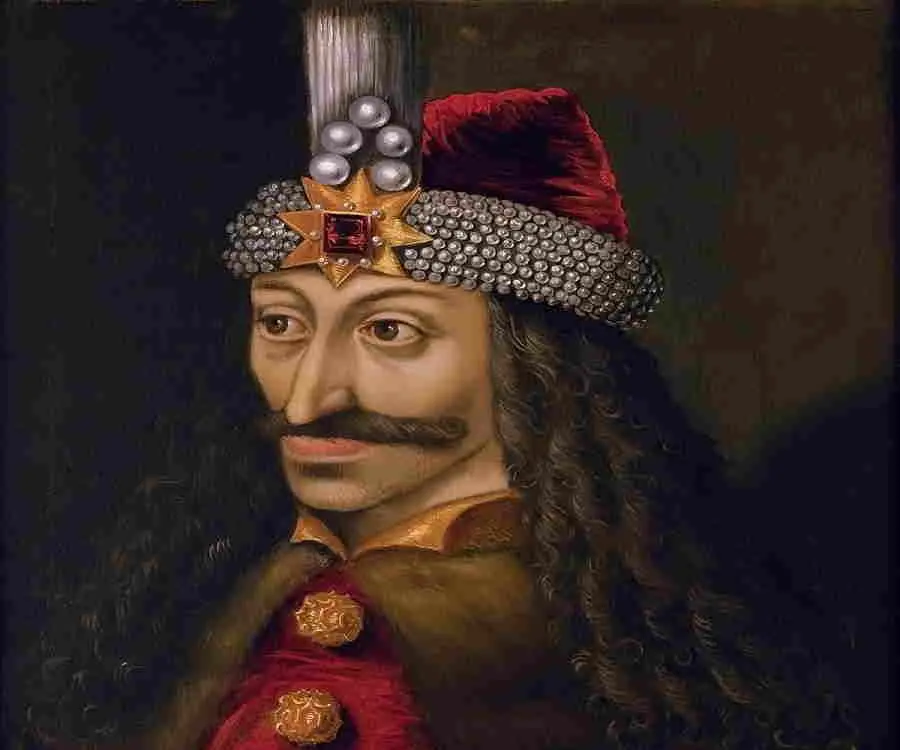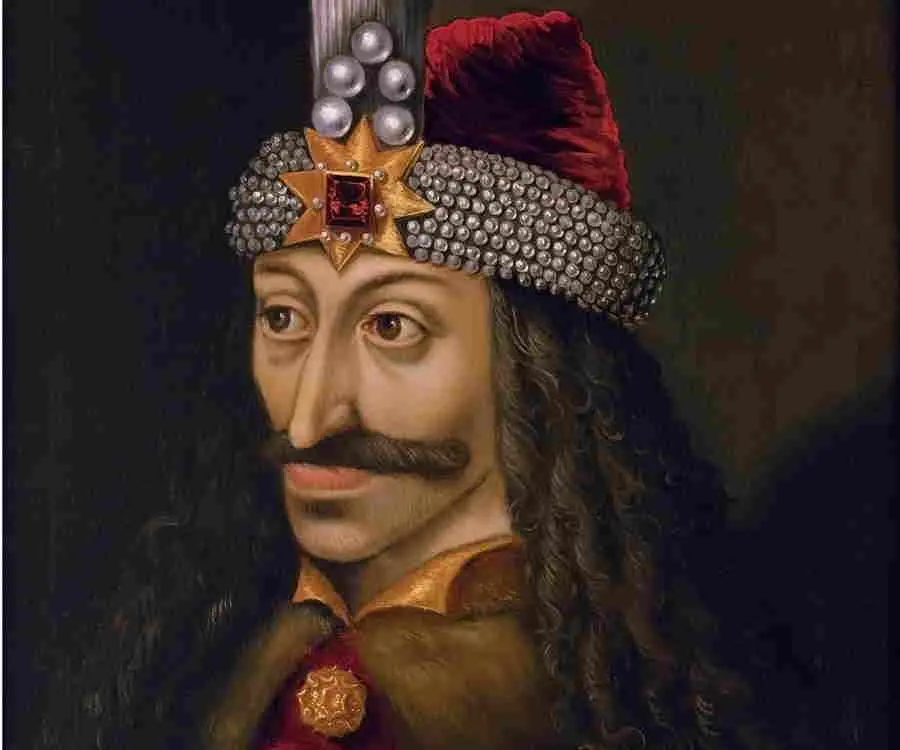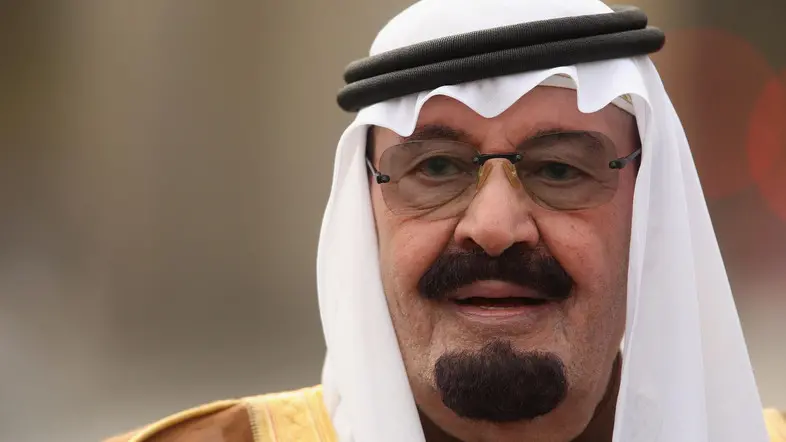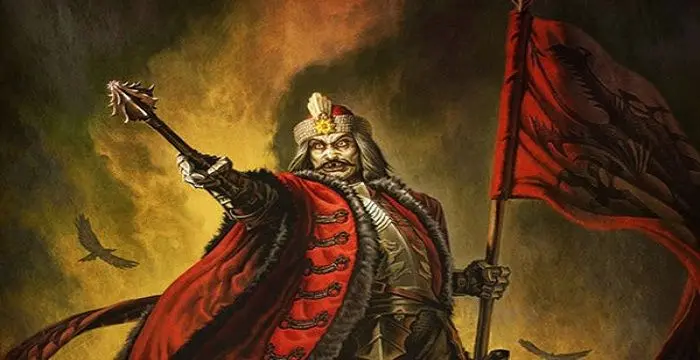
Vlad the Impaler - Romanian Men, Family and Childhood
Vlad the Impaler's Personal Details
Vlad the Impaler or Vlad Dracula was a 15th-century voivode (or prince) of Wallachia
| Information | Detail |
|---|---|
| Birthday | 1431 |
| Died on | December 31, 1477 |
| Nationality | Romanian |
| Famous | Historical Personalities, Emperors & Kings, Emperors, Kings, Romanian Men, Ruler of Wallachia |
| Spouses | Jusztina Szilágyi |
| Known as | Vlad III, Vlad Dracula |
| Birth Place | Sighişoara |
| Gender | Male |
| Father | Vlad II of Wallachia |
| Mother | Eupraxia of Moldavia |
| Born in | Sighişoara |
| Famous as | Ruler of Wallachia |
| Died at Age | 46 |
// Famous Romanian Men
Sebastian Stan
Sebastian Stan is a Romanian-American actor. Check out this biography to know about his childhood, family life, achievements and fun facts about his life.
Kwame Nkrumah
Kwame Nkrumah was the first president and first Prime Minister of Ghana after nation’s independence from British rule. This biography provides detailed information on his childhood, life, career, achievements and timeline.
Nicolae Ceaușescu
Nicolae Ceaușescu was the General Secretary of the Romanian Communist Party, Romania’s last Communist leader. This biography of Nicolae Ceaușescu provides detailed information about his childhood, life, achievements, works & timeline
Vlad the Impaler's photo
Who is Vlad the Impaler?
Vlad III, or as he was widely known, Vlad the Impaler or Vlad Dracula, was a 15th-century voivode (or prince) of Wallachia, the historical and geographical region of Romania. His life had inspired several legends even when he was alive and after his death, he has become a figure of fascination across the world. Raised in the House of Drăculești, a branch of House of Basarab, Vlad III, alongside his younger brother Radu, began to serve as hostages in the Ottoman Empire in 1442 to secure their father's loyalty. After the murders of his father and elder brother, Vlad III attacked Wallachia with an Ottoman army and began his first reign as voivode in 1448. However, he was soon deposed and he had to seek refuge with the Turks. In 1456, he invaded his home country a second time with the Hungarian support. During his second reign, Vlad III systematically purged the Wallachian boyars to strengthen his position. He killed Transylvanian Saxons and ransacked their villages as they previously supported his rivals for the throne. In 1461, he reignited the war against the Ottoman Empire after first refusing to pay homage and then executing Sultan Mehmed II’s envoys. He also tried to unsuccessfully assassinate the sultan himself. Seeking assistance from Matthias Corvinus, King of Hungary, in his struggle against the empire, he visited Hungary but was captured instead. Between 1463 and 1475,Vlad was held captive in Visegrád. It was during this period that the tales of his cruelty began to spread all over Europe. He regained his throne one more time after his release in the summer of 1475 before he was killed in 1476 or 1477.
// Famous Kings
Sundiata Keita
Sundiata Keita was the founder of the Mali Empire in West Africa. This biography profiles his childhood, early life, struggles, founding of empire, rule, administration, achievements and also gives some fun facts.
Ashoka
Ashoka was the third emperor of the Mauryan Dynasty and ruled almost the entire Indian subcontinent. This biography profiles his childhood, life, reign, achievements and timeline
Murad IV
Murad IV was one of the mighty Sultans in the history of the Ottoman Empire. This biography profiles his childhood, family, accession, rule, administration and timeline.
Childhood & Early Life
Vlad III was born sometime between 1428 and 1431, presumably after his father, Vlad II settled in Transylvania. According to most historians, his mother was either a daughter (Princess Cneajna of Moldavia) or a kinswoman (Eupraxia of Moldavia) of Alexander I of Moldavia and the first wife of his father. He had at least three siblings, elder brother Mircea II of Wallachia, younger brother RaducelFrumos, and half-brother VladCălugărul (Vlad II’s illegitimate child with DoamnaCălțuna).
Vlad II was an illegitimate child of his own father, Mircea the Elder and Doamna Mara. He earned the moniker ‘Dracul’ because of his association with the Order of the Dragon, a military fraternity that was set up by the Holy Roman Emperor Sigismund in order to halt the Ottoman advance into the Christendom. His son would proudly carry on the title and continue his father’s war against the Ottoman Empire.
According to historian RaduFlorescu, Vlad III’s birth occurred in the Transylvanian Saxon town of Sighișoara (then in the Kingdom of Hungary), where his father lived between 1431 and 1435. After the death of his half-brother, Alexander I Aldea in 1436, Vlad II captured the Wallachia throne and issued a charter on January 20, 1437, proclaiming Vlad III and Mircea II as his “first born sons”. From 1437 to 1439, Vlad II issued four other charters mentioning his two sons and the last one also named Radu as his legitimate son.
After he did not support the March 1442 Ottoman invasion of Transylvania, Ottoman Sultan Murad II demanded that Vlad II visit him in Gallipoli and renew his loyalty to the Ottoman throne. Vlad II took his two younger sons, Vlad III and Radu and journeyed to the Ottoman Empire where they were immediately imprisoned. While Vlad II was later released, his sons were kept as hostages to ensure his loyalty.
Vlad III received proper education during his time with the Turks. However, he was also whipped and beaten and developed hatred towards Radu and Mehmed. The latter was later crowned as the sultan. He and his brother felt their lives were truly in danger after Vlad II declared his support for Vladislaus, King of Poland and Hungary, against the Ottoman Empire during the Crusade of Varna in 1444. However, they remained unharmed.
According to some historians, the brothers escaped the Ottoman Empire sometime in the mid-1440s but they returned again. Vlad II and Mircea II were murdered in 1447 by John Hunyadi, the regent-governor of Hungary. He put Vladislav II, the son of VladDracul's cousin, Dan II on the Wallachia throne.
First Reign
Following the death of his father and brother, Vlad III began to be considered as a possible heir to his father’s seat. In September 1448, Vladislav II participated in Hunyadi’s campaign into the Ottoman territory. Sensing an opportunity, Vlad III invaded Wallachia with Ottoman soldiers and captured the fortress of Giurgiu on the Danube and helped in strengthening it. On October 18, 1448, the Ottoman forces defeated Hunyadi's army in the Battle of Kosovo.
However, Vladislav II returned to Wallachia soon after and Vlad III had to make a reluctant and hasty retreat in December. He went to Edirne in the Ottoman Empire after he was ousted from power for the first time. He later relocated to Moldavia, where one of his uncles had captured the throne, to ask for support. However, that uncle was killed and Vlad III had to flee to Transylvania with his cousin. They petitioned Hunyadi's for help but he had committed to a three-year peace with the Ottoman Empire already.
Second Reign
Vladislav II had thrown out a significant portion of the Wallachian boyars after he came to power and they eventually settled in Brașov. Vlad III was hoping to live there but Hunyadi refused to allow it. The events in his life from this point onwards are not known. Sometime in 1456, he returned to the pages of history once more by attacking Wallachia with Hungarian support. Vladislav II was subsequently killed and Vlad III assumed the principality of Wallachia later that year.
Right from the beginning, Vlad III sought to establish himself as an assertive and effective ruler. He had an authoritarian personality. Most sources agree that he had hundreds of thousands of people executed soon after his ascension. He led a systematic purging of the Wallachian boyars who he believed had anything to do with the murders of his father and brother. Seizing the control of the money, property and other goods of his victims, he redistributed them among the loyalists, thus radically transforming the political and economic scenes in his principality.
He continued to pay customary tributes to the Ottoman Sultan. This, while kept the Ottomans happy, made the Hungarians angry. They had a new captain-general, Ladislaus Hunyadi, the oldest son of John Hunyadi. He claimed that Vlad III had “no intention of remaining” faithful to the Hungarian throne and instructed the burghers of Brașov to lend their support to Vladislaus II's brother, Dan III, who had emerged as one of the rivals for Vlad III’s seat. The burghers also supported Vlad III’s half-brother VladCălugărul.
On March 16, 1457, Ladislaus Hunyadi was executed by Ladislaus V, the king of Hungary. That resulted in a rebellion, stirred up by Hunyadi’s family, which would eventually put Matthias Hunyadi (later Corvinus) on the Hungarian throne. Taking advantage of this civil war, Vlad III aided Stephen, the son of Bogdan II of Moldavia, to reclaim his father’s throne in June. He also raided into Transylvania, where, according to German tales, he captured thousands of Saxon men, women, and children, took them back to Wallachia, and had them impaled.
Vlad III sent representatives to negotiate peace between Michael Szilágyi, a general and regent of Hungary, and the Saxons. The subsequent treaty compelled the burghers of Brașov to expel Dan III from their land. In return, Vlad III agreed to the notion that merchants from Sibiu could do business freely in Wallachia in exchange for the "same treatment" of the Wallachian merchants in Transylvania. On December 1, 1457, Vlad III proclaimed Szilágyi as “his lord and elder brother”.
By May 1458, the relationship between Vlad III and the Saxons had deteriorated again after he refused to let the Saxon merchants into Wallachia and virtually compelled them to sell their wares to Wallachian counterparts. Despite this, in 1476, he would claim that he had always encouraged free trade in his land.
On September 20, 1459, Vlad III gave himself several titles, including "Lord and ruler over all of Wallachia, and the duchies of Amlaș and Făgăraș". Dan III, with the support of the Hungarians, broke into Wallachia in 1460 but was defeated and executed by Vlad III in April. He went on to break into southern Transylvania and razed the suburbs of Brașov to the ground. Thousands of people, regardless of their age and gender, were impaled.
During negotiations, he also sought the banishment of Wallachia refugees from Brașov. After peace was restored, he called the burghers of Brașov his “brothers and friends”. He solidified his control over the duchies of Amlaș and Făgăraș in August by punishing the citizens of those lands who had supported Dan III.
The Ottoman War
As his power and influence grew in south-east Europe, Vlad III became bolder. Opinions vary on when exactly he stopped paying tributes to the Ottoman Empire. Some Christian scholars argue that he was already ignoring the suzerainty of the Ottoman Sultan, Mehmed II, by 1459, while Tursun Beg, a secretary in the sultan's court, wrote that Vlad III became hostile towards the Ottoman Empire in 1461. According to Tursun Beg, the Sultan came to know about the new negotiations between Vlad III and Matthias Corvinus through his spies.
Mehmed II promptly sent a convoy, the Greek politician, Thomas Katabolinos, and demanded that Vlad III should present himself in Constantinople. He also sent directions to Hamza, bey of Nicopolis, to capture Vlad III when he had crossed the Danube. However, Vlad III soon discovered the sultan’s intention and capturing both Hamza and Katabolinos, he summarily executed them.
In the next few months, he took the fortress of Giurgiu back from the Turks and invaded the empire itself. On February 11, 1462, he wrote a letter to Corvinus asking for military assistance. He reported that over 23,884 Turks and Bulgarians had been killed at his order during the campaign, declaring that he had broken peace with the sultan in honour of the Hungarian Crown and Christianity.
After learning of Vlad III’s invasion, Mehmed II raised a colossal army, which, as per most accounts, had over 150,000 men and declared Radu, Vlad III’s younger brother, as the ruler of Wallachia.
In May 1462, the Ottoman fleet reached Brăila, the only Wallachianport on the Danube. Overwhelmed by the sheer size of the Ottoman army, Vlad III retreated, adopting a scorched earth policy. On the night of either 16 or 17 June, he managed to get into the Ottoman camp, looking to assassinate the sultan. The venture was unsuccessful as instead of attacking the court of the sultan himself, Vlad III and his men struck the camps of viziers Mahmut Pasha and Isaac. Realising their blunder, Vlad III and his retainers escaped at dawn.
Mehmed II followed them to Târgoviște, a town which was used as a stronghold by Vlad III. When they entered Târgoviște, the sultan and his men found the town deserted and were horrified when they saw thousands upon thousands of impaled carcasses.
Subsequently, Vlad and his allies suffered a series of defeats and he had to withdraw to Chilia. After Mehmed II left Wallachia, Radu was in charge of the Ottoman army. Vlad III defeated his brother twice but more and more people began to deflect to join Radu. By November 1462, Vlad II had been captured by Czech mercenary commander, John Jiskra of Brandýs, under Corvinus’ orders.
Later Years, Final Reign & Death
Vlad III spent the next fourteen years of his life imprisoned in Visegrád and was eventually released after Stephen III of Moldavia made a request to Corvinusto let him go in the summer of 1475. However, initially, Corvinus gave Vlad III no support in his campaign against BasarabLaiotă, whom the Ottomans had installed as the ruler in Wallachia. In November 1476, Vlad III attacked Wallachia with Hungarian and Moldavian support and forced him to flee to the Ottoman Empire.
After he became voivode the third time, he sent letters to the burghers of Brașov, asking for carpenters to build a house for himself in Târgoviște. However, his third reign did not last long as BasarabLaiotă returned with an Ottoman army. In December 1476 or January 1477, Vlad III died fighting Laiotă and the Ottoman forces. The location of his grave is currently unknown.
Personal Life & Legacy
Vlad III had been married twice. Historian Alexandru Simon concluded that his first wife was an illegitimate daughter of John Hunyadi. He married his second wife, Justina Szilágyi, probably in 1475, after the death of his first wife. Vlad III reportedly had three sons, MihneacelRău (1462-1510), an unknown second son (??-1486), and VladDrakwlya (??-??).
The tales of Vlad III’s deeds began to spread even during his lifetime. Since his death, a wide range of both fictional and non-fictional literature has been published about him, most notably Bram Stoker’s ‘Dracula’. He continues to be a subject of interest for scholars of history, politics, and military tactics. While the rest of the world has come to see him as a monster, in Romania, he is revered as a national hero.
Vlad the Impaler biography timelines
- // 1431Vlad III was born sometime between 1428 and 1431, presumably after his father, Vlad II settled in Transylvania. According to most historians, his mother was either a daughter (Princess Cneajna of Moldavia) or a kinswoman (Eupraxia of Moldavia) of Alexander I of Moldavia and the first wife of his father. He had at least three siblings, elder brother Mircea II of Wallachia, younger brother RaducelFrumos, and half-brother VladCălugărul (Vlad II’s illegitimate child with DoamnaCălțuna).
- // 1431According to historian RaduFlorescu, Vlad III’s birth occurred in the Transylvanian Saxon town of Sighișoara (then in the Kingdom of Hungary), where his father lived between 1431 and 1435. After the death of his half-brother, Alexander I Aldea in 1436, Vlad II captured the Wallachia throne and issued a charter on January 20, 1437, proclaiming Vlad III and Mircea II as his “first born sons”. From 1437 to 1439, Vlad II issued four other charters mentioning his two sons and the last one also named Radu as his legitimate son.
- // 1442After he did not support the March 1442 Ottoman invasion of Transylvania, Ottoman Sultan Murad II demanded that Vlad II visit him in Gallipoli and renew his loyalty to the Ottoman throne. Vlad II took his two younger sons, Vlad III and Radu and journeyed to the Ottoman Empire where they were immediately imprisoned. While Vlad II was later released, his sons were kept as hostages to ensure his loyalty.
- // 1448Following the death of his father and brother, Vlad III began to be considered as a possible heir to his father’s seat. In September 1448, Vladislav II participated in Hunyadi’s campaign into the Ottoman territory. Sensing an opportunity, Vlad III invaded Wallachia with Ottoman soldiers and captured the fortress of Giurgiu on the Danube and helped in strengthening it. On October 18, 1448, the Ottoman forces defeated Hunyadi's army in the Battle of Kosovo.
- // 1456Vladislav II had thrown out a significant portion of the Wallachian boyars after he came to power and they eventually settled in Brașov. Vlad III was hoping to live there but Hunyadi refused to allow it. The events in his life from this point onwards are not known. Sometime in 1456, he returned to the pages of history once more by attacking Wallachia with Hungarian support. Vladislav II was subsequently killed and Vlad III assumed the principality of Wallachia later that year.
- // 1457On March 16, 1457, Ladislaus Hunyadi was executed by Ladislaus V, the king of Hungary. That resulted in a rebellion, stirred up by Hunyadi’s family, which would eventually put Matthias Hunyadi (later Corvinus) on the Hungarian throne. Taking advantage of this civil war, Vlad III aided Stephen, the son of Bogdan II of Moldavia, to reclaim his father’s throne in June. He also raided into Transylvania, where, according to German tales, he captured thousands of Saxon men, women, and children, took them back to Wallachia, and had them impaled.
- // 1458By May 1458, the relationship between Vlad III and the Saxons had deteriorated again after he refused to let the Saxon merchants into Wallachia and virtually compelled them to sell their wares to Wallachian counterparts. Despite this, in 1476, he would claim that he had always encouraged free trade in his land.
- // 1459On September 20, 1459, Vlad III gave himself several titles, including "Lord and ruler over all of Wallachia, and the duchies of Amlaș and Făgăraș". Dan III, with the support of the Hungarians, broke into Wallachia in 1460 but was defeated and executed by Vlad III in April. He went on to break into southern Transylvania and razed the suburbs of Brașov to the ground. Thousands of people, regardless of their age and gender, were impaled.
- // 1462In May 1462, the Ottoman fleet reached Brăila, the only Wallachianport on the Danube. Overwhelmed by the sheer size of the Ottoman army, Vlad III retreated, adopting a scorched earth policy. On the night of either 16 or 17 June, he managed to get into the Ottoman camp, looking to assassinate the sultan. The venture was unsuccessful as instead of attacking the court of the sultan himself, Vlad III and his men struck the camps of viziers Mahmut Pasha and Isaac. Realising their blunder, Vlad III and his retainers escaped at dawn.
- // 1477After he became voivode the third time, he sent letters to the burghers of Brașov, asking for carpenters to build a house for himself in Târgoviște. However, his third reign did not last long as BasarabLaiotă returned with an Ottoman army. In December 1476 or January 1477, Vlad III died fighting Laiotă and the Ottoman forces. The location of his grave is currently unknown.
// Famous Emperors
Sundiata Keita
Sundiata Keita was the founder of the Mali Empire in West Africa. This biography profiles his childhood, early life, struggles, founding of empire, rule, administration, achievements and also gives some fun facts.
Ashoka
Ashoka was the third emperor of the Mauryan Dynasty and ruled almost the entire Indian subcontinent. This biography profiles his childhood, life, reign, achievements and timeline
Murad IV
Murad IV was one of the mighty Sultans in the history of the Ottoman Empire. This biography profiles his childhood, family, accession, rule, administration and timeline.
Xerxes I
Xerxes I (Xerxes the Great) was the fourth and the most famous king of the Archaemenid dynasty of Persia. This biography profiles his childhood, family, personal life, life history, achievements, campaigns, administration, death and other facts.
Sargon of Akkad
Sargon of Akkad, also called ‘Sargon the Great’, ‘Sarru-Kan’ and ‘Shar-Gani-Sharri’, was the founder and first king of the Akkadian Empire. This biography profiles his childhood, life, rule, administration, timeline, and gives some fun facts.
Abdullah of Saudi Arabia
Abdullah bin Abdulaziz Al Saud was the King of Saudi Arabia from 2005 to 2015 and the third wealthiest head of state in the world. Find more facts about his life, childhood and timeline.
Vlad the Impaler's FAQ
When was Vlad the Impaler died?
Vlad the Impaler was died at 1477-12-31
Which age was Vlad the Impaler died?
Vlad the Impaler was died at age 46
Where is Vlad the Impaler's birth place?
Vlad the Impaler was born in Sighişoara
What is Vlad the Impaler nationalities?
Vlad the Impaler's nationalities is Romanian
Who is Vlad the Impaler spouses?
Vlad the Impaler's spouses is Jusztina Szilágyi
Who is Vlad the Impaler's father?
Vlad the Impaler's father is Vlad II of Wallachia
Who is Vlad the Impaler's mother?
Vlad the Impaler's mother is Eupraxia of Moldavia
How famous is Vlad the Impaler?
Vlad the Impaler is famouse as Ruler of Wallachia

